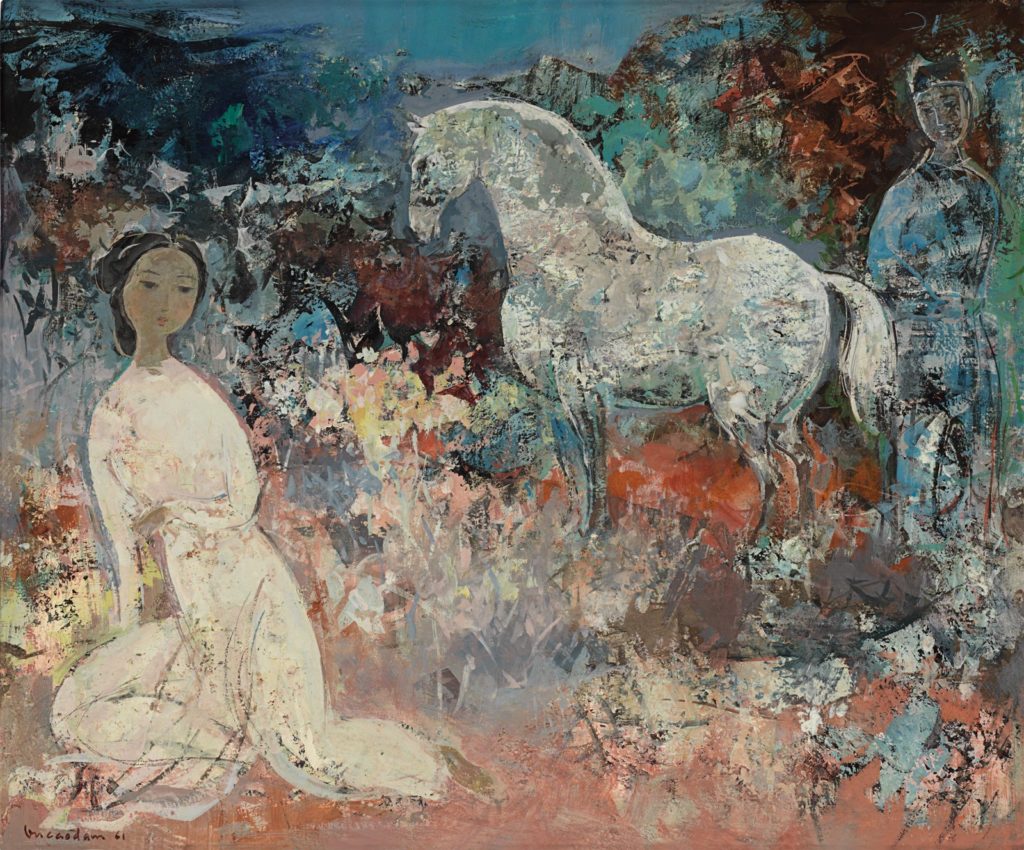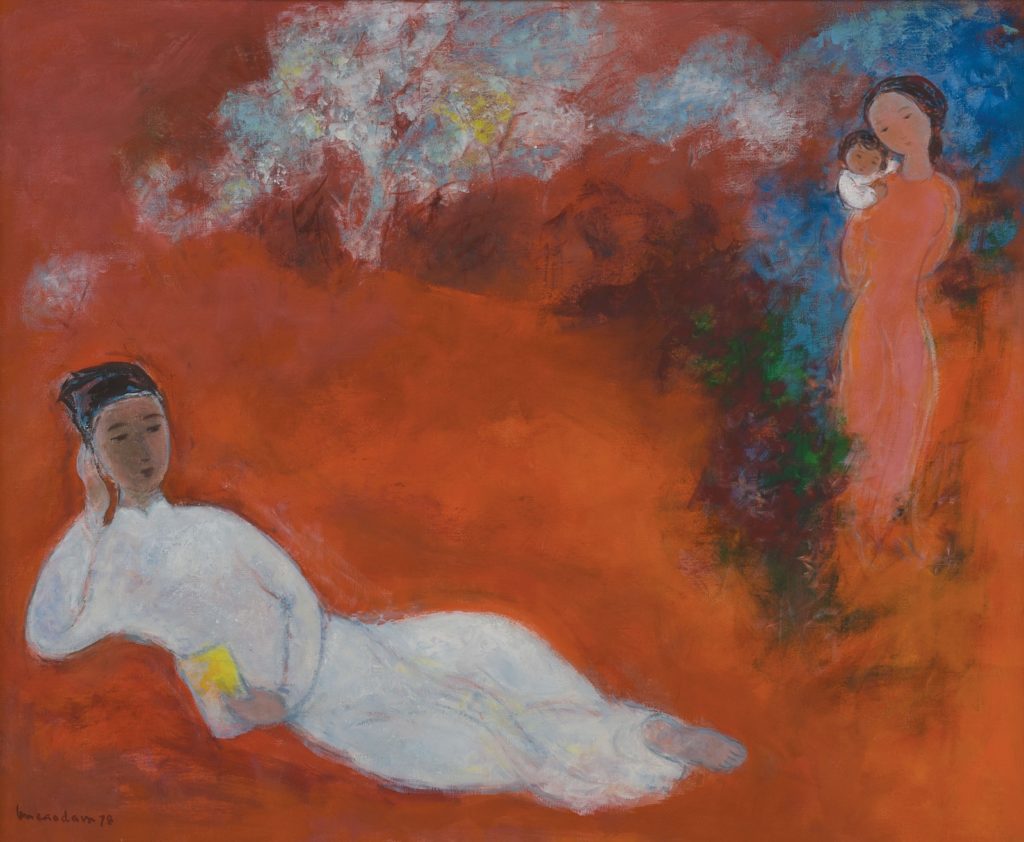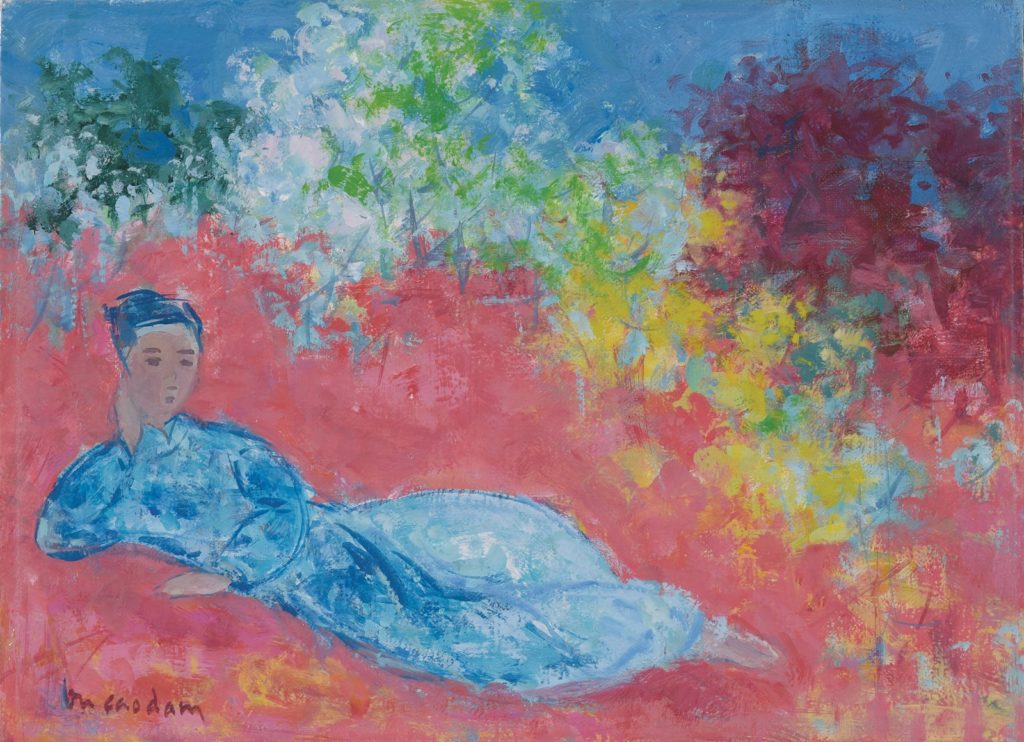Vu Cao Dam – The Findlay Period : Before and During
Throughout his life, Vu Cao Dam repeated that his work was essentially drawn from the Kim Van Kieu, the poetic saga (written by Nguyên Du, 1765-1820) that for many observers inside and outside Vietnam was the very emblem of the deepest Vietnamese soul : a dramatic epic story from which Vu Cao Dam chose to illustrate only moments of happiness, love and serenity found within.
Indeed, Vu Cao Dam came from a line of learned men, this is why he very naturally considered as a reference the grand literary Vietnamese tradition which he, by nature, both borrowed and acted upon.
Whilst illustrating stories about the Kim Van Kieu, Vu Cao Dam was not satisfied with a simple illustration of the highly popular book; he added his personal touch and he breathed his truth into it. In some rare paintings, we can identify precise scenes of the story but usually the works are more allusive than descriptive. In the original text, Kieû and Van see a man appear on “his horse, small and vivacious, (…) white like snow, the colour in his clothing resemble wind and grass from the sky”.

In this way, in Le Cheval Blanc, we can identify Kim, the main male character of the book.
On the other hand, the two other paintings Composition and Le Poète do not allow, even if they suggested it, a precise identification of Kim Van Kieu.


Executed in 1961, circa 1963 and 1978 our three masterworks show the progressive integration of the artist in his Findlay period. In a private interview with Yannick Vu-Jakober, the artist’s daughter, she said “I believe that Dad met Findlay through Le Pho in Paris (…) Findlay and his sister Helen often came to Saint- Paul and for a long time kept corresponding with my parents”.
Two interesting points are worthy of being mentioned from these three works.
Firstly, we can note that Vu Cao Dam “fixed” his new style before his commitment with the Findlay Gallery in 1963 as shown in Le Cheval Blanc dated 1961.
Secondly, we can also see that under the influence of his time commissioned by the Findlay galleries, the background is not as charged allowing the artist to emphasize on the characters in the foreground.
The three paintings are works of maturity, with a studied composition and an extraordinary mixture of mastery and the most intense sensitivity.
Jean-François Hubert